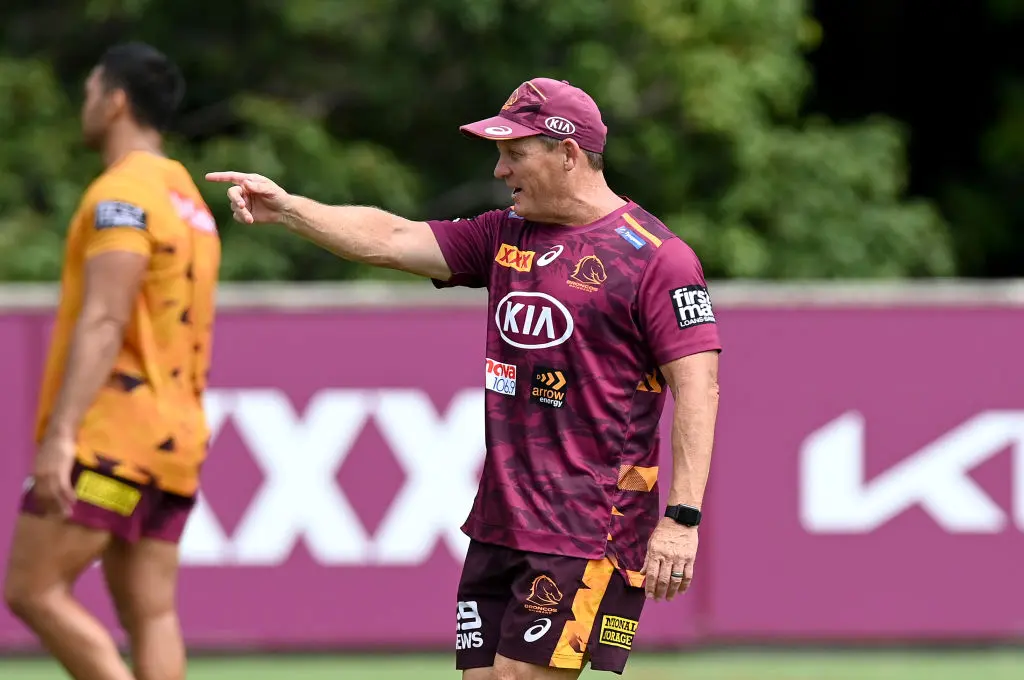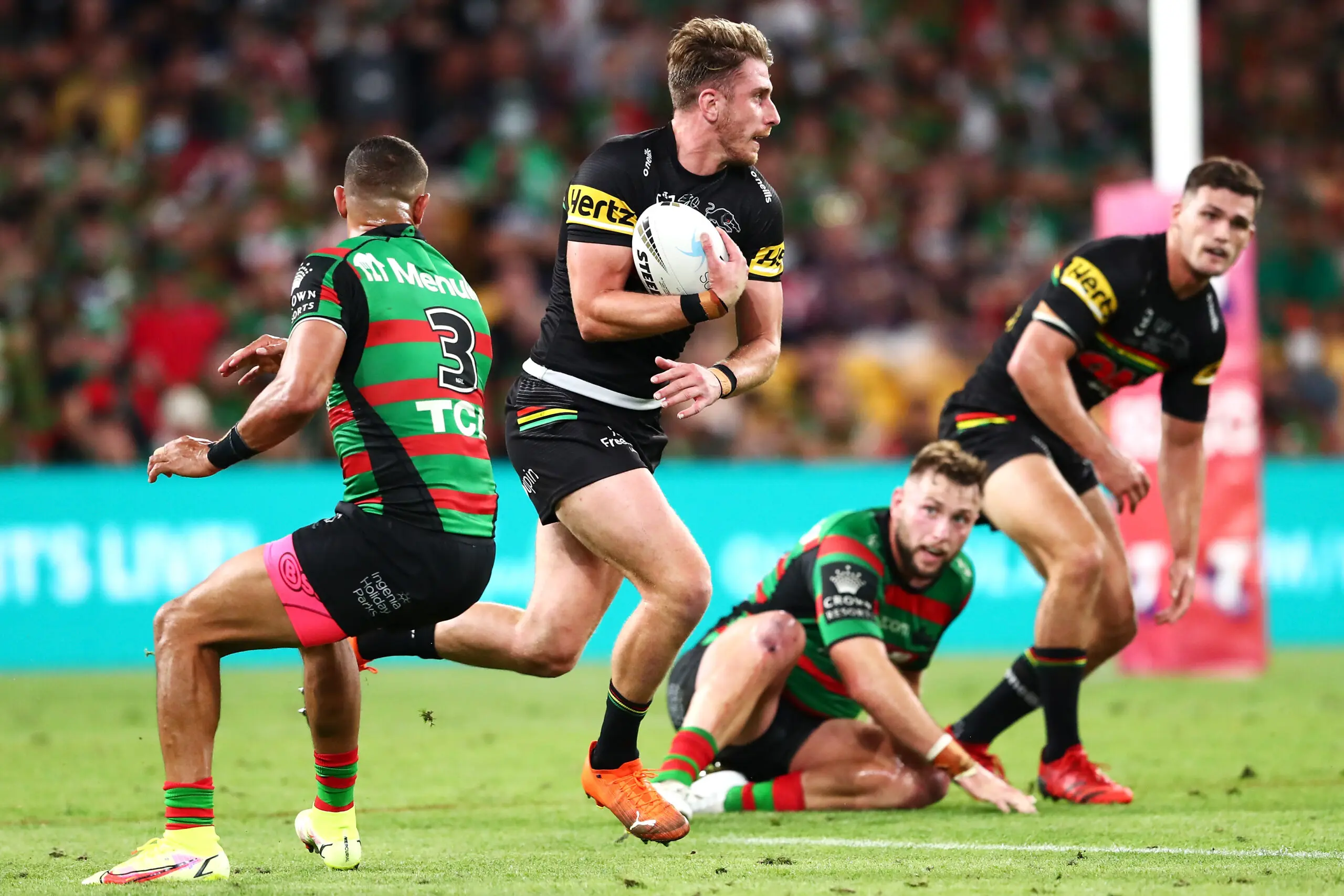Every year, the NRL draw is released, and every year, without fail, there are oddities which just can't be explained by any normal means.
Let's get one thing clear - the NRL will never have a 'fair' draw.
The only way to achieve that would be to cut the competition to 15 games (16 when the Dolphins enter) or to expand it to 30 games (32 when the Dolphins enter).
Neither of those proposals are even close to what can or will happen, so for the competition to have a completely equitable draw where every team plays each other team either once or twice is completely and utterly off the table.
But that doesn't mean we need to have the farce we currently have.
The draw for 2022 is yet to be announced (it's tipped to be revealed on Friday morning), but once again, there will be oddities. There will be 2021 top eight teams spending most of their nine double-up games against teams in the bottom eight, and teams who finished in last year's bottom eight are forced to double up against a majority of teams in the top eight.
It just doesn't make any sense how the NRL came to that proposal, and while last year's ladder positions sometimes may not reflect what is about to follow in the season ahead, it is virtually the only measure of success or team standing the NRL can rely on.
But they don't use it. Despite claims and reports they attempt to scale the draw, so that teams at the bottom of last year's ladder get an easier run, and teams at the top get a tougher run, it doesn't always turn out that way.
Take the 2021 draw for example, where the Broncos, despite coming off a wooden spoon, had seven of their nine double up games against teams out of the 2020 top eight. The Bulldogs, who had struggled for years, had five of their extra nine against teams in the top eight, while the Rabbitohs had even less games against those sides in the top eight.
The season before that, two teams who missed the top eight in the Tigers and Bulldogs were widely acknowledged to have the toughest draws.
Meanwhile, the Sharks, who had finished in the top eight, played just five games after Round 3 against teams who finished in the previous year's top eight, playing all of their double-up fixtures against teams in the bottom eight.
So it's evident there is no method, no formula and no intent from the NRL to make a fair and equitable draw, no matter what they might try to tell you.
Again, it's impossible to know which teams are going to perform and which aren't in a new season, but the ladder position from the previous season is the fairest way to work it out.
It will also give the NRL a hard and fast criteria which will stop fans, the media and clubs wondering how they came up with the newest iteration of the draw.
Obviously, going to 17 teams will throw a spanner in the works as well once the Dolphins enter the competition, but for now, we can deal with the 16-team model.
Here is how to fix the draw:
Step 1: Every team plays each other team once before double ups
It's not rocket science, but the NRL make it look like it might as well be. So often during the season, we will see repeat fixtures within the space of two months. Teams at times have played other teams twice before they have even looked at every team in the competition.
The first 15 rounds should be to see every team play each other once. No double-ups. Do a complete round-robin to break things up and rub out the chance of a team being able to play another team twice without the same injured players.
Step 2: The first eight double-up games
In working out who should play who across the first eight double up games, last year's ladder comes into the picture.
The ladder would be divided into quadrants of four teams. First to fourth, fifth to eighth, ninth to twelfth and thirteenth to sixteenth.
Each team would then play two teams out of each quadrant of the ladder to make up their first eight double-up games, including their own.
So for example, for the 2022 draw, the Panthers would play two out of the Sea Eagles, Storm and Rabbitohs, and two out of each of the remaining quadrants on the ladder.
Step 3: The final double-up game
There are two options for the 25th game of the season. Either, the NRL retains one wildcard pick to make sure it can play all the rivalry games it wants to, or they go for an even fairer model.
The fairer model would be to simply select the third team out of teams own finishing quadrant from the season before. So, in the same example as above, the Panthers would play the remaining team out of the Sea Eagles, Storm and Rabbitohs during the 2022 season as the top four. All of those teams would play each other twice during the season.
This model, in theory, should ensure more close games during the double-ups, and also should allow for teams held at the bottom of the ladder to avoid having to play the entire top eight twice from the season before, as we have, at times, seen previously. It will also allow the NRL to schedule all the blockbusters it wants to between last year's top-finishing teams.
It will also give fans an idea of what to expect, to know who they will be playing, and for the NRL to wipe their hands of any accusations of bias or analysis of who has a "hard" or "easy" draw.
It's the simple method to fix what is currently a mess of a fixture list presented year after year.









One of the most sensible suggestions I have heard for years. Personally, I would go with the “super-fair” option. If every team plays every other in the first fifteen rounds then there is no need for the NRL to put its finger on the scales – all the annual blockbusters will have taken place in the first fifteen rounds.
When the Dolphins join, just treat them as if they were an extra in the bottom quadrant.
Great article.